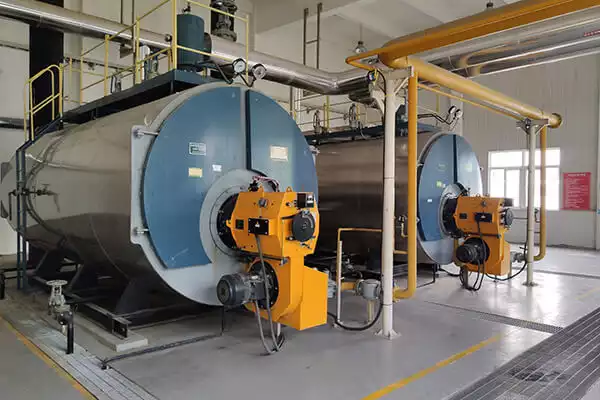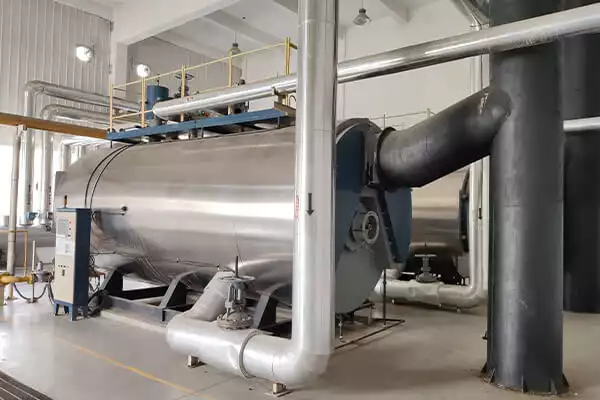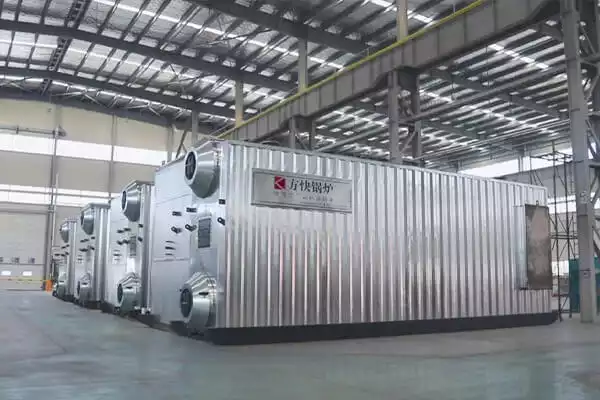
Prix des chaudières à mazout en 2022 | The Compelete Guide
The price of an oil heating boiler is about $2,800-$6,700. Un chaudière à mazout is a vital part of any building. Il convertit l'huile en chaleur, qui peut être utilisé pour réchauffer votre maison ou votre bureau. Dans ce guide, you will be able to learn more about oil-fired heating boilers. So that you can make a more reasonable choice.
Is it worth getting a heating oil boiler?
meilleure chaudière au mazout
Vaut-il la peine d'acheter une chaudière à mazout? Oui! Voici pourquoi:
- Le pétrole est plus cher que le gaz. Vous pouvez vous attendre à payer entre $0.06 and $0.08/liter for oil, which is significantly higher than the $0.05-$0.07/liter you’d pay for gas. Si vous chauffez votre maison à l'électricité ou GPL (gaz de pétrole liquéfié), alors cette différence de prix n'a peut-être pas trop d'importance pour vous, mais si vous avez une grande propriété et que vous voulez savoir combien d'argent une chaudière à mazout pourrait vous faire économiser au fil du temps, Découvrez cette calculatrice de nos amis d'Energy Saving Trust!
- Les chaudières au fioul sont beaucoup plus efficaces que les chaudières au gaz and lead to lower heating bills in cold weather thanks to their high-efficiency rating (80%+). Cela signifie que même si les chaudières à mazout ont tendance à coûter plus cher au départ, they’ll also save money on fuel costs every month over the course of their life because they need less energy overall when compared with other types of systèmes de chauffage comme les thermopompes électriques installées à l'intérieur des greniers où les températures varient en fonction des températures extérieures au cours des différentes saisons.
Obtenez un prix fixe en ligne dans 20 secondes:
Avantages & Les inconvénients.
Avantages:
- Efficace: Modern oil heating systems are highly efficient, with high energy content in each gallon of oil. They can provide consistent and reliable heat, quickly warming up a space.
- Cost Stability: Oil prices tend to be more stable compared to other fuel sources, such as natural gas or propane. While prices can fluctuate, they generally do not experience the same volatility as other energy sources.
- Availability: Oil is widely available in many regions, making it accessible for heating purposes. Delivery can be scheduled regularly to ensure a constant supply.
- Heat Output: Oil heat produces high heat output, making it effective for heating larger spaces or homes located in colder climates.
- Longevity: Oil heating systems, when properly maintained, can have a long lifespan. With regular servicing and care, they can provide reliable heat for many years.
Les inconvénients:
- Impact environnemental: Oil heat contributes to carbon emissions and air pollution. Burning oil releases carbon dioxide (CO2), sulfur dioxide (SO2), and nitrogen oxide (NOx), which are greenhouse gases and pollutants that can negatively impact air quality and contribute to climate change.
- Storage Space: Oil heating systems require an on-site storage tank to hold the oil. This requires dedicated space on the property, either above-ground or underground.
- Fuel Delivery: Unlike natural gas or electricity, oil heat requires regular fuel deliveries to maintain a supply. Homeowners must ensure they monitor their oil levels and schedule deliveries in a timely manner to avoid running out.
- Entretien: Oil heating systems require regular maintenance to ensure proper functioning. This includes annual servicing to clean and inspect the system, as well as occasional filter changes and nozzle cleaning.
- Potential Spills: The storage and handling of oil come with the risk of spills or leaks, which can be environmentally hazardous and costly to clean up. Proper installation, maintenance, and inspection can help mitigate this risk.
- Carbon Footprint: As mentioned earlier, oil heat has a higher carbon footprint compared to some other heating options, such as natural gas or renewable energy sources like solar or geothermal heating.
Installation.
- Design and planning: Determine the appropriate size and capacity of the boiler based on the heating needs of your space. Consider factors such as square footage, insulation, and climate. Consult with a heating professional to select the right boiler model and design the system layout.
- Obtain necessary permits: Check with your local building authority to determine if any permits are required for the installation of an oil boiler heating system. Obtain the necessary permits before starting the installation process.
- Choose a suitable location: Select a location for the boiler that meets the manufacturer’s guidelines and local building codes. The area should have proper ventilation, adequate clearance for maintenance, and be easily accessible for fuel oil delivery and service.
- Install the fuel storage tank: If you don’t already have an oil storage tank, you’ll need to install one before the boiler installation. The tank should comply with local regulations and be located in a suitable area, such as a basement, utility room, or outdoors. Follow the manufacturer’s instructions for proper installation and connection to the oil supply lines.
- Prepare the installation area: Clear the area where the boiler will be installed and ensure there is sufficient space for the boiler, fuel lines, venting system, and access for maintenance. Install any necessary support or mounting brackets as specified by the manufacturer.
- Install the boiler: Carefully follow the manufacturer’s instructions for installing the oil boiler. This includes connecting the supply and return pipes, electrical connections, and control wiring. Ensure that all connections are secure and properly sealed to prevent leaks.
- Connect the fuel oil supply lines: Install the fuel oil supply lines from the storage tank to the boiler. Use the appropriate materials, such as steel or copper pipes, and install shut-off valves and filters as required. Ensure proper alignment and secure connections to avoid leaks.
- Install the venting system: Determine the appropriate venting system based on the boiler model and local regulations. It may involve installing a chimney or vent pipe system to exhaust combustion gases. Follow the manufacturer’s guidelines and local codes to ensure safe and effective venting.
- Electrical connections: Connect the electrical wiring according to the manufacturer’s instructions and local electrical codes. This includes connecting power to the boiler, thermostat, and any additional controls or accessories.
- Test and commission the system: Once the installation is complete, the system should be thoroughly tested for proper operation and safety. This includes checking for fuel leaks, verifying proper combustion, adjusting settings, and ensuring the system is functioning according to specifications. Follow the manufacturer’s instructions and any local regulations for commissioning the boiler heating system.
Besoin d'une nouvelle chaudière?
Comment purger une chaudière à mazout?
réchauffeur de chaudière à mazout
Saignement d'un chaudière à mazout est un processus d'élimination de l'air du système en ouvrant une vanne de purge et en lui permettant de s'échapper. Cela peut être fait avec ou sans l'utilisation de manomètres, qui sont utiles pour déterminer si l'air a été complètement éliminé du système.
Première, coupez toute alimentation de votre chaudière au fioul en coupant si possible son disjoncteur.
- Ouvrez votre robinet de purge lentement; le faire trop rapidement peut faire s'échapper de l'huile et endommager les composants environnants. Laissez tout liquide qui s'échappe s'écouler dans un récipient pour une élimination ultérieure. * Fermez la vanne de purge lorsque vous avez fini de purger tout excès de liquide afin de ne pas en laisser plus que nécessaire dans les tuyaux de votre système.
Le chauffage au fioul est-il moins cher que le gaz?
chaudière à mazout
Plusieurs facteurs déterminent le coût du chauffage de votre maison, mais il est important de noter que le type de carburant que vous utilisez peut avoir un impact significatif sur vos dépenses mensuelles. Si vous envisagez de passer du chauffage au gaz au chauffage au mazout, ou vice versa, gardez à l'esprit qu'il y a des avantages et des inconvénients à chaque type de source d'énergie.
Le pétrole est moins cher que le gaz naturel. Le pétrole est moins cher que le gaz naturel ou propane parce qu'il n'est pas aussi largement utilisé que ces autres carburants et que les producteurs doivent se faire concurrence pour obtenir des parts de marché. Parce que le pétrole est abondant dans de nombreuses régions du pays (y compris l'Amérique du Nord), en outre, comme le pétrole ne nécessite pas de traitement spécial avant d'être vendu, contrairement au propane, la chaîne d'approvisionnement n'est pas aussi complexe non plus; ce qui peut se traduire par des économies en aval, car moins de personnes impliquées signifie moins de frais généraux répercutés sur les consommateurs.
Obtenez des devis de chaudière GRATUITS
- ✔Obtenez des devis gratuits de chaudières locales aujourd'hui
- ✔Comparez les meilleurs prix
- ✔Économisez de l'argent sur votre nouvelle chaudière aujourd'hui!
How much does it cost to install an oil heating boiler?
prix chaudière fioul
The cost of installing an oil heating boiler depends on the size of the boiler and where it is installed. Le coût moyen est d'environ $2,800 – $6,700 mais cela peut varier en fonction de nombreux facteurs, y compris:
- La taille de votre nouvelle chaudière au fioul. Plus le système est grand, plus ce sera cher à installer.
- Votre emplacement. Si vous vivez dans une zone rurale ou un endroit éloigné qui nécessite des distances de déplacement plus longues, cela peut affecter le montant que vous payez pour les travaux d'installation car il y aura des coûts de carburant plus élevés pour le transport des matériaux et du personnel jusqu'à votre domicile ou votre chantier.
Conclusion
An oil heating boiler is a device that will heat your home or business with warm water. Ils sont constitués de différents types de matériaux et peuvent être utilisés pour chauffer l'eau rapidement ou lentement selon leur niveau d'efficacité.. Il existe de nombreux types de chaudières disponibles. If you want to know more about oil heating boilers, Contactez nous s'il vous plait: à +0086 186-2391-5479.

Vous recherchez des chaudières avec une fabrication sophistiquée, grande qualité?
La chaudière Fangkuai peut toujours fournir ce que vous voulez.
Get your best price
Quickly compare 3 FREE quotes
- Engineer quick quote
- The overall delivery speed is fast
- Financial choice
- Low installation costs and cost savings
25 years+ of boiler R&D
More than 20 innovative technologies



